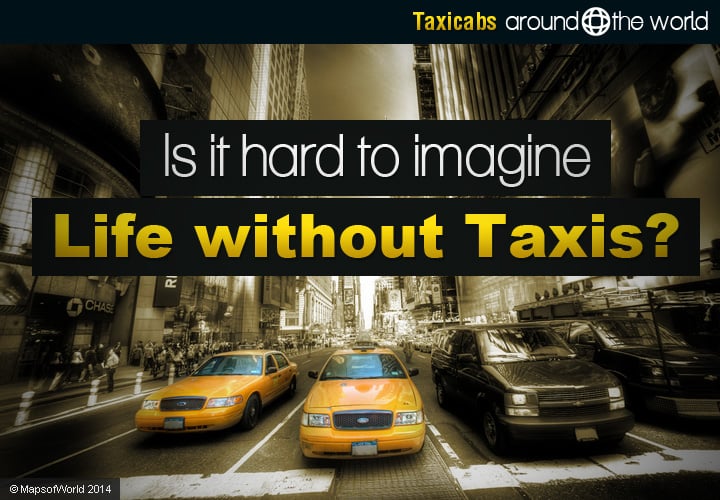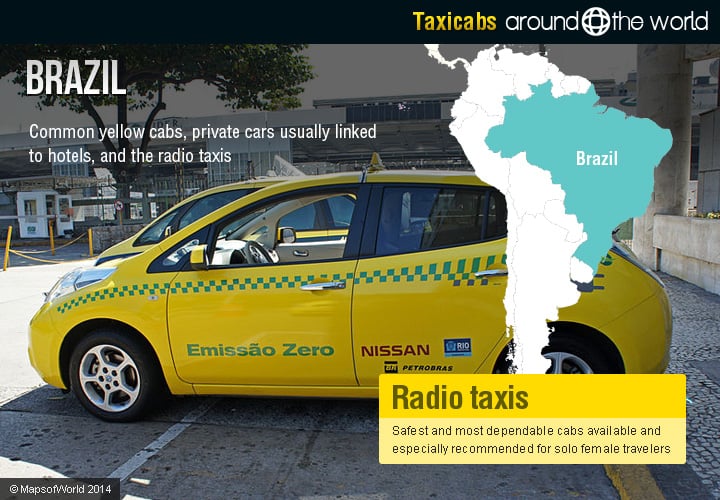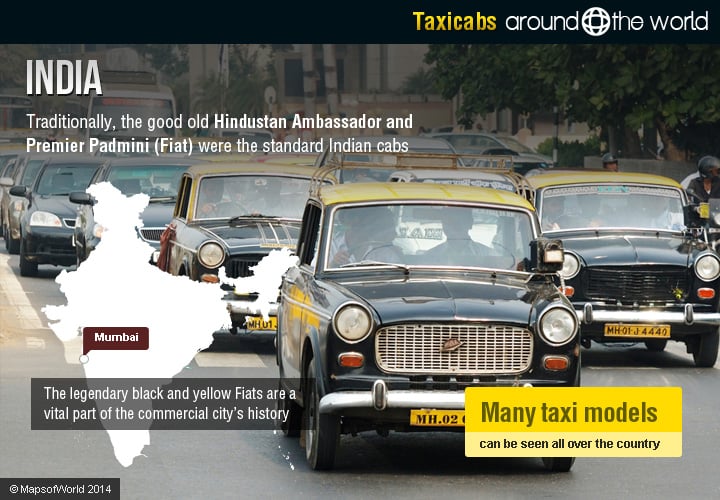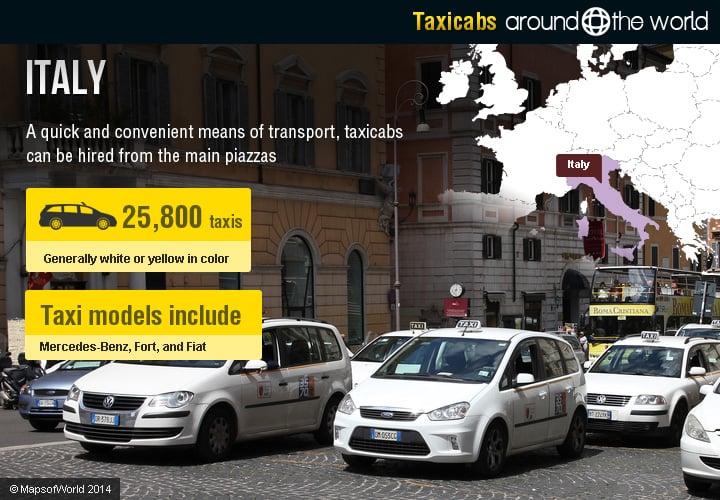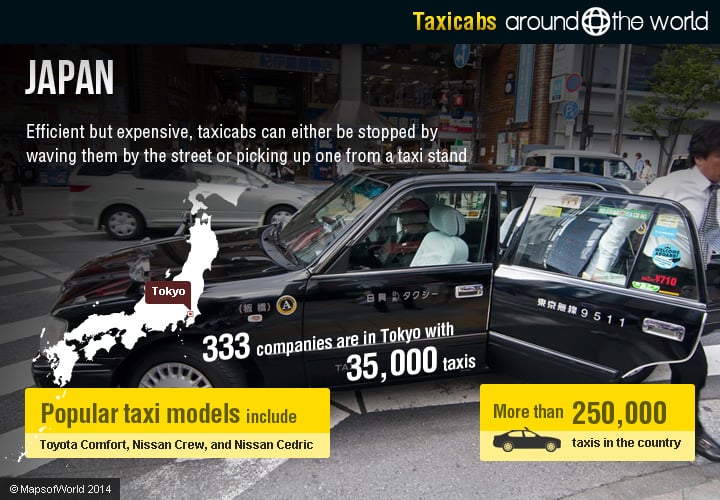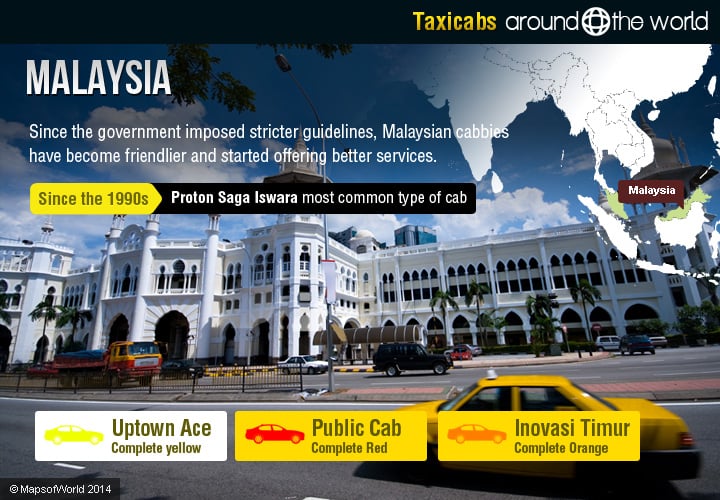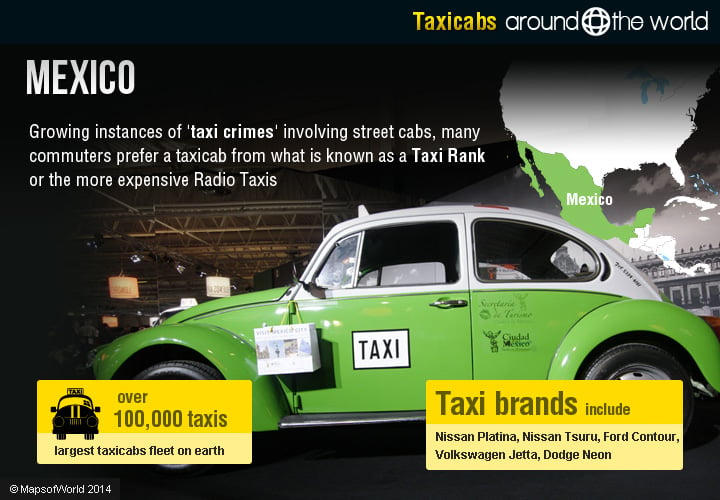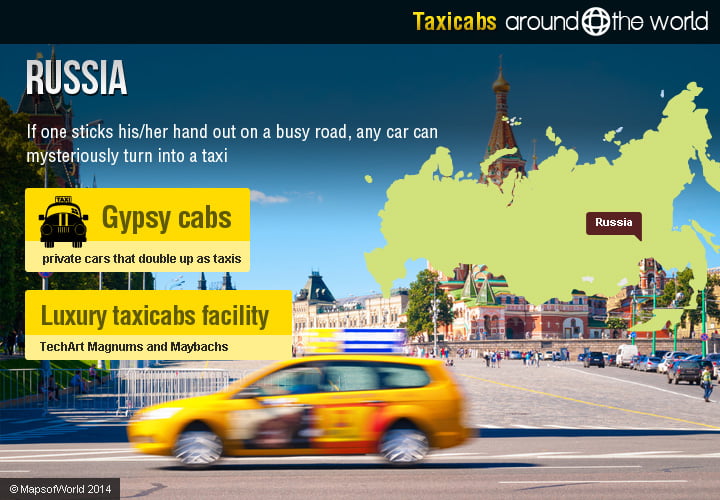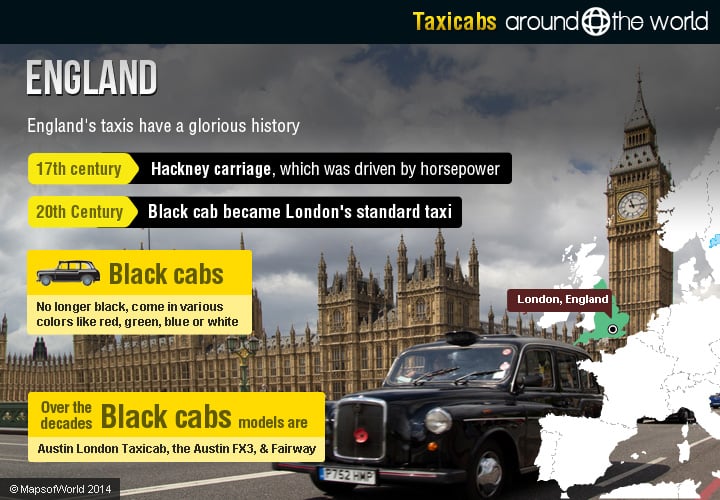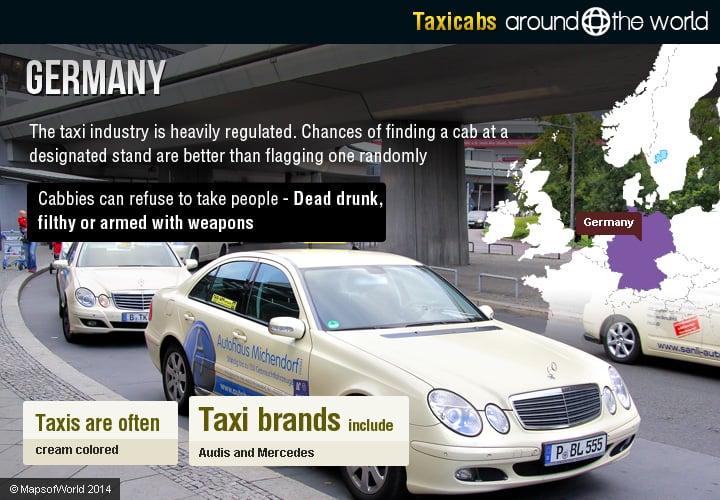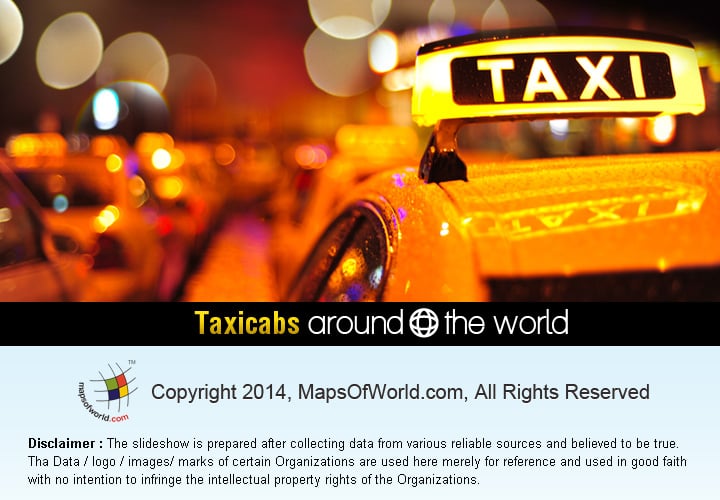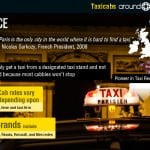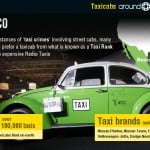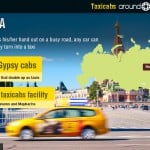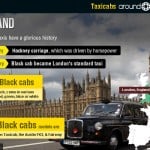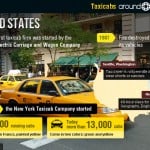Is it hard to imagine Life without Taxis?
Before taxicabs, there used to be ”horse-drawn for-hire services” that first began during the 16th century in Paris and London. The first taxi in the world was built in 1897 by Gottlieb Wilhelm Daimler, who was born in Schorndorf, Germany. The taxi was named Daimler Victoria, the first gasoline-powered and meter-equipped taxicab on earth. Thereafter, such gasoline-powered cabs started running in 1899 in Paris, in 1903 in London, and in 1907 in New York.
In today’s time, taxicabs come in all shapes, sizes, and colors and are a vital link between destinations in most modern cities. Having started operating in most places from the beginning of the 20th century, they became a part of the urban landscape by the middle of the century. Indeed, today, wherever you are in the world, it’s hard to imagine life without taxis.
In 1997 sci-fi film The Fifth Element Bruce Willis (Korben Dallas) takes his flying taxi through time and space, escaping the clutches of the police. His passenger? The beautiful Leeloo (Milla Jovovich). While taxi rides in the real world are unlike the Korben’s gravity-defying ones, cabs come in all shapes, sizes, and colors and vary from country to country. Cited below are some of the countries that prominently use cab services:
United States
New York City’s first taxicab firm was the Electric Carriage and Wagon Company, which started in 1897. But, it was shut down after a devastating fire in 1907 that destroyed a majority of its vehicles. However, by next year through the initiative of Harry N. Allen, another firm — the New York Taxicab Company — had 700 running cabs in the city. Imported from France, they were painted yellow. A great city’s love affair with taxicabs had started.
Today, New York has more than 13,000 cabs and they come in two colors: green and yellow. A large percentage of cabbies are from the Indian subcontinent.
Some curious laws govern taxis in the United States. In Seattle, Washington for instance, a taxi driver is not permitted to wear shorts or sandals. In New York City, cabbie students in order to become certified drivers are required to attend a 40-hour class for learning Geography, English, and decorum.
England
England’s taxis have a glorious history and can be traced back to the 17th century hackney carriage, which was driven by horsepower of the animal kind.
In the twentieth century, the iconic black cab became London’s standard taxi. Getting to be a cab driver in London is not easy. He or she has to clear something known as the Knowledge Test, which can take a lot of effort to pass. Black cabs are no longer necessarily black and come in various colors like red, green, blue or white. Over the decades, the models of black cabs have included the Austin London Taxicab, the Austin FX3, and Fairway.
France
“Paris is the only city in the world where it is hard to find a taxi.”
Nicolas Sarkozy, French President, 2008
Things haven’t got much better since then. One can only get a taxi from a designated taxi stand and not flag one, off the road because most cabbies won’t stop. Cab rates vary depending on the destination, time of the day, and the taxi firm. And, yes, it’s generally a good idea to tip the driver.
A pioneer in the taxi revolution, France imported its gasoline-powered taxis to New York in the first decade of the 20th century. Taxi brands include Peugeot 406, Škoda, Renault, and Mercedes.
Germany
The taxi industry is heavily regulated in Germany. Chances of finding a cab at a designated stand are better than flagging one randomly. But, given Germany’s amazing roads, it’s a very fast and efficient means of getting around. Taxis are often cream-colored and include many Audis and Mercedes. If one is wanting to hire a taxi, it’s a good idea not to be dead drunk, filthy or armed with weapons as the cabbie can refuse to take them in and the law will be on his side!
Russia
Here’s the thing about ‘cabs’ in Russia. If one sticks his/her hand out on a busy road, any car can mysteriously turn into a taxi. Next, one will have to settle for a more expensive fare if one doesn’t speak Russian. If the driver quotes an outrageous price, then wave another car/taxi and repeat the above. Interestingly, if one takes the less adventurous route — hire an official cab from the stand or call for one then, one might end up paying even more.
The private cars that double up as taxis are sometimes called ‘gypsy cabs’, and they far outnumber the official ones. Luxury taxicabs facility is also available in Russia such as TechArt Magnums (based on Porsche Cayennes) and Maybachs.
Italy
A quick and convenient means of transport, taxicabs in Italy can be hired from the main piazzas. Generally white or yellow in color, they are typically government-regulated, but unofficial ones also ply. Travelers should avoid hiring taxis without a meter fixed in them and even non-regulated cabs should be avoided as they charge extra for everything including luggage and late-night service.
Interestingly, most drivers start the meter from the moment they get the call for a customer so, by the time you get in, it may have run a few euros. Presently, in Italy there is a situation of conflict between those who support the taxi licenses deregulation and those who are opposing this.
Common taxi models include Mercedes-Benz, Fort, and Fiat. There are over 25,800 taxis running in the country.
Japan
Efficient but expensive as most other things in Japan, taxicabs can either be stopped by waving them by the street or picking up one from a taxi stand. The country has more than 250,000 cabs. Capital Tokyo alone has 333 various companies that run some 35,000 taxis. All cabs have meters and the left rear passenger doors open and close automatically after you enter and exit.
Negotiation for a fare and giving a tip are generally not the done thing in this part of the world. The trustworthiness of Japanese cabbies is pretty high. Popular taxi models include Toyota Comfort, Nissan Crew, and Nissan Cedric.
China
Hiring a cab in most major Chinese cities is generally a hassle-free experience and relatively inexpensive. If one is a tourist who does not speak Mandarin, it is, however, useful to write down your destination name and address on a piece of paper in Chinese characters and show it to the driver. In capital Beijing, which has more than 65,000 cabs, drivers are known to understand a bit of English. Even small villages and towns have taxicabs services, but they are often unregulated, which can consist of motorbikes with extensions or carriages.
Tipping is not the norm. All taxis are metered and giving you a receipt after the journey is the standard norm. Models such as the Volkswagen Jetta and Hyundai are commonly used as cabs.
India
Traditionally, the good old Hindustan Ambassador and Premier Padmini (Fiat) were the standard Indian cabs. They still are in some places, but are being phased out by Mahindra Logan and Tata Indigo. These ancient vehicles fitted in perfectly with the ideals of socialist India of yesteryear. The legendary black and yellow Mumbai Fiats are a vital part of the commercial city’s history. Today, however, many sleeker taxi models can be seen all over the country.
Indian drivers tend to understand basic English, but foreign tourists have to be especially careful about the fare, as being taken for a ride of the wrong kind is not uncommon. It is best to do one’s homework and find out clearly what the fare is beforehand. And, once the driver quotes an outrageous price, which he is likely to one must be prepared to haggle.
Malaysia
Cabbies in Malaysia have a bad reputation for refusing to turn on the meters and ripping off their customers. But, lately the government has tried to impose stricter guidelines. However, one should be alert and insist that the driver put on the meter. Else, simply walk off and get into another cab. Also, if one is taking a cab from an airport or any such major destination, chances of an unusually high fare are greater. On a safer side, to prevent such situation it is advisable to get a coupon from coupon kiosks.
Since the 1990s, the Proton Saga Iswara is the most common type of cab. Malaysian taxicabs are usually red and white in color, yellow, black or just like the colors in the Malysian flag – red, white and blue with “yellow crescent moon and star.” Then, taxis having corporate colors also operate like Complete Orange (Inovasi Timur), Complete Yellow (Uptown Ace), Complete Red (Public Cab), etc. There are over 250 such fleet of automobiles.
Mexico
Because of growing instances of ‘taxi crimes’ involving street cabs, many commuters in Mexico City prefer a taxicab from what is known as a Taxi Rank or the more expensive Radio Taxis. While safety is definitely a concern, taxis continue to be a relatively inexpensive way of getting around. Most drivers don’t speak English so knowing a little Spanish can be helpful. The new style street cabs — circled by bright red stripes or painted gold and burgundy are safer as they have been recently licensed and also have a unique license plate of white color that is of five numbers and starts with a capital letter. The taxicabs fleet in Mexico is estimated to be over 100,000, which makes it the largest taxicabs fleet on earth.
In 2012, the government started phasing out the uncomfortably gritty, but legendary two-door old-style VW Beetles, called Vochos in Mexico that operated for nearly ten years. Cars that are generally seen as taxis here are: Nissan Platina, Nissan Tsuru, Ford Contour, Volkswagen Jetta, Dodge Neon, and others.
Brazil
There are several kinds of taxis in Brazil. These include the common yellow cabs, private cars usually linked to hotels and the radio taxis. It’s usually a good idea to get the yellow cab from a taxi stand. They are run by meters. With private cars, negotiating the price beforehand is the way to go, but be prepared to pay more than one would for a common cab. Radio taxis are easily the safest and most dependable cabs available and especially recommended for solo female travelers. Most cabbies don’t understand English, but it’s possible to get around by naming an important landmark or carrying a map.


